I’ll confess right from the start of this blogpost that yes, I adore Christmas and everything about it, but particularly Christmas films and books and bracing walks by the sea.

A few years after we’d moved to King’s Lynn we went to the fantastic Old Boathouse Café in Hunstanton for breakfast on Christmas Eve, but were distracted by something big and fishy-looking on the beach. It turned out to be an extremely dead sperm whale. It was quite young, so not as large as it might have been, but still an awesome sight. I felt very privileged to be able to get so close to one of these creatures and he appears occasionally in my poetry, which is getting increasingly fishy and salty as we settle in to our new coastal home!
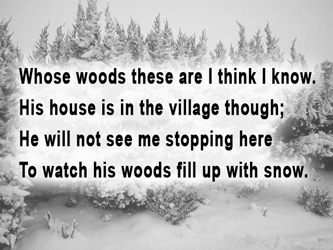
I hope you have all discovered Candlestick Press www.candlestickpress.co.uk and their wonderful series of slim pamphlets, mostly poetry, which can be sent instead of a card. There are a number of Christmassy ones including an annual series The Twelve Poems of Christmas, now in its eighth volume. One of my favourite pamphlets is Gillian Clarke’s The Christmas Wren, a beautiful re-interpretation of A Child’s Christmas in Wales. There’s a Welsh language version too! Also worth checking out is John Lewis-Stempel’s The Wood in Winter – a transcendent piece of nature writing about the life of a wood in bleak midwinter. There’s nothing nicer than curling up under a fleecy throw with a glass of mulled wine and candles and reading Christmas poetry, preferably aloud. Throw in a beautifully illustrated version of Robert Frost’s Stopping by Woods on a Snowy Evening and I’m in Christmas heaven.
If you’re looking for that perfect last-minute gift for someone who loves reading, I’ve discovered a new literary gift website, Bookishly, https://www.bookishly.co.uk/collections They have the most beautiful gift packages, such as their limited edition festive gift box, A Christmas Carol Book Crate. I’m rather taken with the idea of A Blind Date with a Book, where you get a surprise vintage book, beautifully wrapped, or The Coffee and Book Club subscription which gives you a monthly vintage book and bag of coffee. There’s a tea equivalent, Classics and cuppa, which sounds great too.
So, given my predilection for all things Christmassy, it’s no wonder I’m completely entranced by Christmas lights. The North Norfolk coast abounds in pretty villages with classy lights. Holt is a must with the wonderful Bakers and Larner (a sort of Fortnum and Mason equivalent, but cuter) looking truly magical. The fine city of Norwich is full of glittery snowflakes hanging from trees, and also has a Tunnel of Light… I love the idea of bringing light to the darkest time of the year: candles, fairylights, fires. Perhaps we should all start celebrating St Lucia’s day on the 13th December as they do in Sweden. Lucy was a young Christian girl, martyred for her faith. She would bring food to the catacombs for persecuted Christians in hiding, wearing a garland of candles so she had both hands free to carry more food. I once had a poem published in fab webzine Ink, Sweat and Tears http://www.inksweatandtears.co.uk/ which explored various ideas of light, including this festival:
The Chandelier Competition
What would you use to bring light into our lives?
Candles? Crystal? Mirrors? Sparklers?
Fireflies? Solar Trickery?
Your entries, boxed and bubble-wrapped,
must reach us by midday of the winter equinox.
Last year’s winner is a hard act to follow;
an intricate weaving of glow-worms,
darkness and moonlight;
a perfect equilibrium of chiaroscuro.
This creation lasted one night only –
the glow-worms devoured
both light and shade.
They lay, plump and dim in the dawnlight
like toothless vampires.
This year’s judges are our most northerly neighbours :
Icelanders, Greenlanders, Swedes and Orcadians.
They have all signed waivers
after the Danes’ scandalous looting
of last year’s runners up.
First prize this year is a month
in the southern hemisphere.
The darkness is coming.
Light a candle to Santa Lucia
and try your luck.
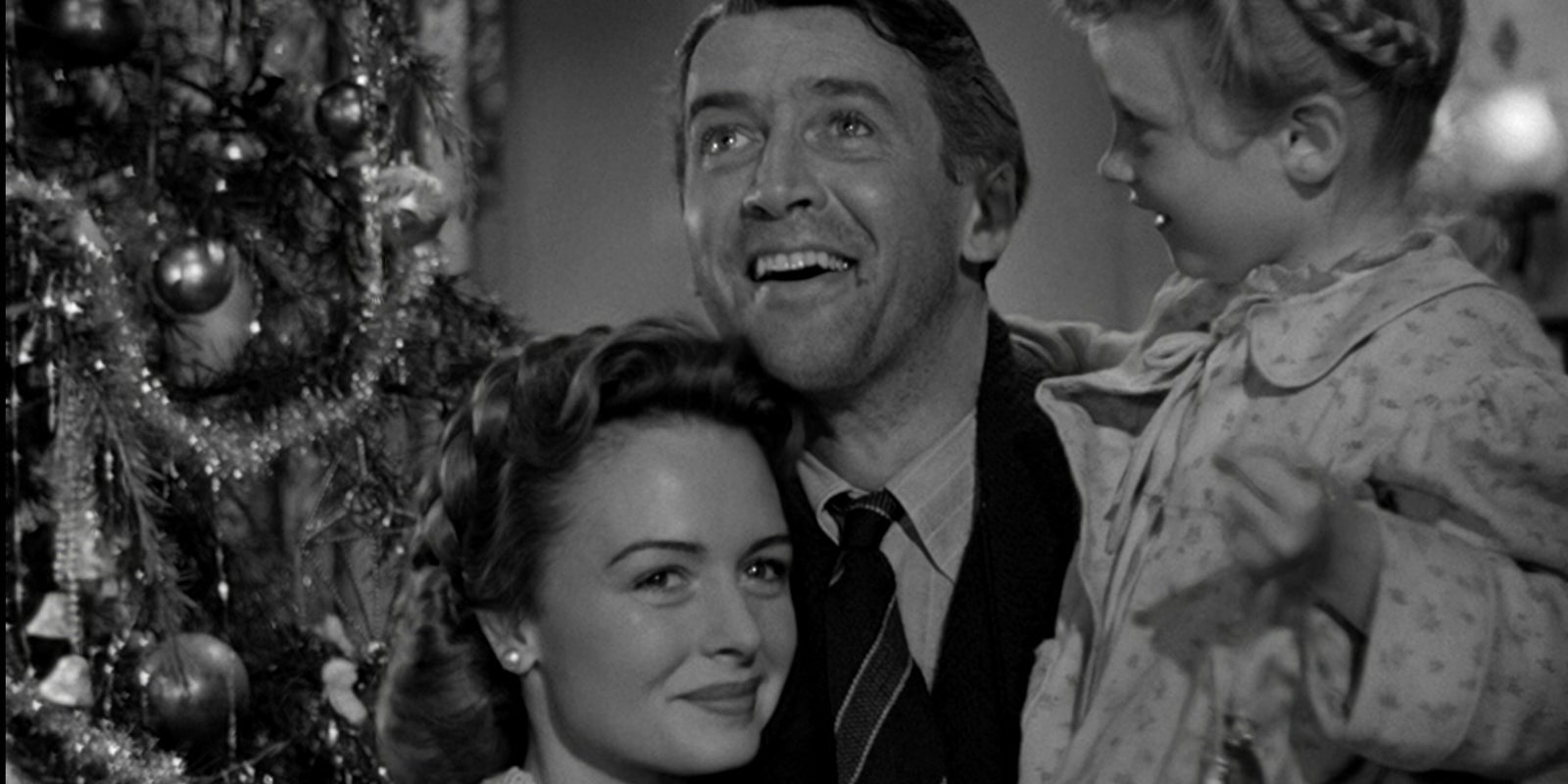 I do, of course, spend quite a bit of time watching Christmas films. I’m sure we all enjoy creating our own traditions at Christmas and for us Christmas Day can’t start until we’ve watched It’s a Wonderful Life (1946) late on Christmas Eve. I always cry at the end, even after multiple viewings. James Stewart as George Bailey, in debt and trouble through no fault of his own, wants to die. Clarence, the angel who’s trying to get his wings, rescues him by showing him what life would be like if there were no George Bailey. It’s really a re-telling of Dickens’ A Christmas Carol, with Mr Potter as the evil banker – the bad side of Scrooge, and George Bailey as the benign banker who Scrooge later becomes. Clarence is all the ghosts of Christmas past, present and future wrapped into one as he shows George the impact he has had on everyone. The film has to be watched in conjunction with my favourite version of A Christmas Carol, the 1951 version with Alistair Sim as a fabulously histrionic Scrooge, although The Muppet Christmas Carol is a close second! Paddington, voiced by the inimitable Ben Whishaw, is fast becoming a Christmas favourite. I’ve been very interested in the discussions in the press discussing Paddington 2 and referencing Paddington as our outlet for Brexit frustration. He is the classic immigrant and the various attitudes of the community towards him reflect our somewhat divided nation at the moment.
I do, of course, spend quite a bit of time watching Christmas films. I’m sure we all enjoy creating our own traditions at Christmas and for us Christmas Day can’t start until we’ve watched It’s a Wonderful Life (1946) late on Christmas Eve. I always cry at the end, even after multiple viewings. James Stewart as George Bailey, in debt and trouble through no fault of his own, wants to die. Clarence, the angel who’s trying to get his wings, rescues him by showing him what life would be like if there were no George Bailey. It’s really a re-telling of Dickens’ A Christmas Carol, with Mr Potter as the evil banker – the bad side of Scrooge, and George Bailey as the benign banker who Scrooge later becomes. Clarence is all the ghosts of Christmas past, present and future wrapped into one as he shows George the impact he has had on everyone. The film has to be watched in conjunction with my favourite version of A Christmas Carol, the 1951 version with Alistair Sim as a fabulously histrionic Scrooge, although The Muppet Christmas Carol is a close second! Paddington, voiced by the inimitable Ben Whishaw, is fast becoming a Christmas favourite. I’ve been very interested in the discussions in the press discussing Paddington 2 and referencing Paddington as our outlet for Brexit frustration. He is the classic immigrant and the various attitudes of the community towards him reflect our somewhat divided nation at the moment.

I very much enjoy cooking at Christmas. As a vegan/vegetarian household our food is non-traditional and features lots of salads and tasty nut roasts baked in pastry with lashings of red wine sauce and copious amounts of roast potatoes. It’s always interesting to try something different at Christmas and my first Christmas abroad was in Israel on a kibbutz near Afula. All the volunteers were given a day off and we had a feast featuring food from all over the world outside in the sunshine where I discovered the delights of Dutch apple cake which I still adore today. The most unusual setting I’ve experienced was in the Rajasthani desert. We were on a camel trek and our rather meagre Christmas feast was hijacked by three very suspicious-looking men who appeared out of nowhere heading for the Pakistan border. Our guide nonchalantly explained later that they were heroin smugglers which explained why he was so eager to give most of our food away. Another year we had Christmas Day in Cochin where every Indian we saw wished us a Happy Christmas, to the extent, at times, of honking and shouting their greetings from cars. We walked past window displays of Santas astride cotton wool snow and went to a Kathakali (Indian dance) show, complete with a very memorable make-up demonstration which lasted longer than the actual performance. Earlier that day I had been able to pander to my usual geekiness by visiting the synagogue with the beautiful blue cantonese tiles which Salman Rushdie describes in The Moor’s Last Sigh.

So, wherever you are in the world, and however you feel about the festive period, be warm, safe and happy!
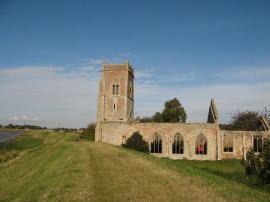
 I’ve just finished The River by Olivia Laing which follows the course of another Ouse, the one in Sussex in which Virginia Woolf took her life in 1941 wearing her heaviest coat, pockets full of stone. It’s a depressing but fascinating book, Laing had just split up with her partner and her sense of anxiety and unease permeates every step as she walks alone in deep contemplation. Occasionally Laing launches herself into the water to cool down and revitalise, these are disturbing moments during which she seems to have little regard for her safety and I held my breath until the next page, willing her to survive. I’ve just reviewed Elizabeth Jane Burnett’s Swims (Penned in the Margins). This powerful collection is a long poem documenting twelve wild swims across the UK’s rivers, lakes and seas. Each poem is an experiment, pushing at the page, seeking freedom from its confines and I thoroughly enjoyed the inventiveness of it. The thought of wild swimming entrances me and I’m even thinking of investing in a wetsuit for all year round sea swimming. Swimming is where I plan my writing workshops and solve poetic problems – that tricky last line, what to leave out, the perfect twist for a line, the revelation of the ideal form to fit the content of the poem – it’s as if the beat of my arms and legs sets up a problem-solving rhythm.
I’ve just finished The River by Olivia Laing which follows the course of another Ouse, the one in Sussex in which Virginia Woolf took her life in 1941 wearing her heaviest coat, pockets full of stone. It’s a depressing but fascinating book, Laing had just split up with her partner and her sense of anxiety and unease permeates every step as she walks alone in deep contemplation. Occasionally Laing launches herself into the water to cool down and revitalise, these are disturbing moments during which she seems to have little regard for her safety and I held my breath until the next page, willing her to survive. I’ve just reviewed Elizabeth Jane Burnett’s Swims (Penned in the Margins). This powerful collection is a long poem documenting twelve wild swims across the UK’s rivers, lakes and seas. Each poem is an experiment, pushing at the page, seeking freedom from its confines and I thoroughly enjoyed the inventiveness of it. The thought of wild swimming entrances me and I’m even thinking of investing in a wetsuit for all year round sea swimming. Swimming is where I plan my writing workshops and solve poetic problems – that tricky last line, what to leave out, the perfect twist for a line, the revelation of the ideal form to fit the content of the poem – it’s as if the beat of my arms and legs sets up a problem-solving rhythm.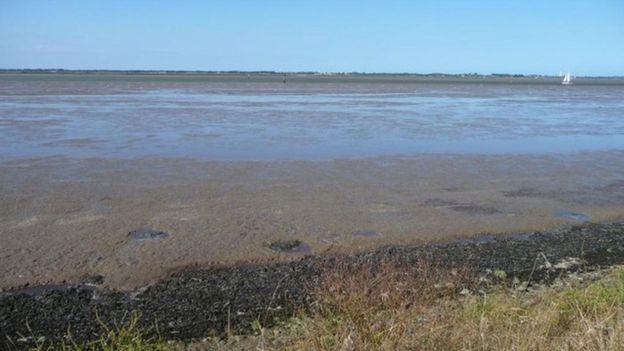 Another favourite river walk is the Nar Valley Way. We’ve walked from Gressenhall (near the source) back to Narborough several times and have done the Narborough to King’s Lynn stretch too. It’s more valley than river, although the river does pop up in surprising places along the way. My favourite stretch is Narborough to Castle Acre. Early on in the walk there’s a distant view of Narford Hall, seat of the Fountaines, where in the 1960s Andrew Fountaine, founder member of the BNP created an annual Aryan camp. Or perhaps we’re better off remembering Margaret Fountaine of South Acre, diarist, lepidopterist and explorer in an era (1890s onward) when this was just not “done”, especially as it seems that the much-travelled Margaret may have had an “affectionate relationship” with her guide and trasnlator of 27 years, Khalil Neimy. The large number of monastic ruins strewing the countryside are a great feature of the walk, all found near clean flowing water to meet the monks’ needs. Walking past The Stag at West Acre and then down to the Fords, you get tantalising glimpses of the ruined priory of West Acre before crossing the water meadows and coming out at the ruins of Castle Acre, a Cluniac Priory dating back to 1090.
Another favourite river walk is the Nar Valley Way. We’ve walked from Gressenhall (near the source) back to Narborough several times and have done the Narborough to King’s Lynn stretch too. It’s more valley than river, although the river does pop up in surprising places along the way. My favourite stretch is Narborough to Castle Acre. Early on in the walk there’s a distant view of Narford Hall, seat of the Fountaines, where in the 1960s Andrew Fountaine, founder member of the BNP created an annual Aryan camp. Or perhaps we’re better off remembering Margaret Fountaine of South Acre, diarist, lepidopterist and explorer in an era (1890s onward) when this was just not “done”, especially as it seems that the much-travelled Margaret may have had an “affectionate relationship” with her guide and trasnlator of 27 years, Khalil Neimy. The large number of monastic ruins strewing the countryside are a great feature of the walk, all found near clean flowing water to meet the monks’ needs. Walking past The Stag at West Acre and then down to the Fords, you get tantalising glimpses of the ruined priory of West Acre before crossing the water meadows and coming out at the ruins of Castle Acre, a Cluniac Priory dating back to 1090.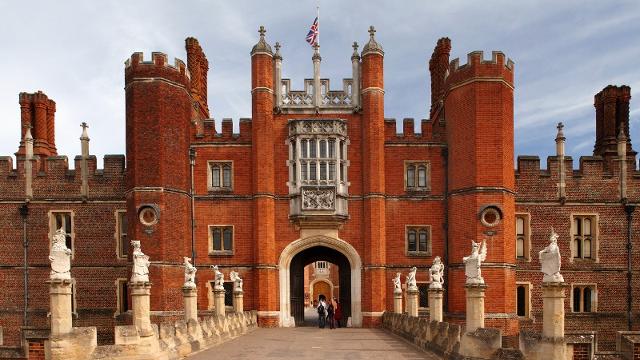 I guess it’s no suprise that I’m so attracted to rivers. My father was a boatbuilder and I grew up in Kingston-upon-Thames so the river was always a strong presence through my formative years. At the end of the road where I lived for most of my childhood was the Hogsmill, a tributary of the Thames which, one memorable evening, overflowed – I remember my mother furiously sweeping it back under the door. Kingston was well situated for visits to Kew Gardens on the bus with twopence entry posted in the honesty box. I would walk along the Thames to Hampton Court where under sixteens could get in for a couple of shillings. It’s probably here that my love of history began as I devoured Jean Plaidy and stood with my eyes closed in the Haunted Gallery where Catherine Howard is said to have begged Henry for her life, hoping to hear her cries.
I guess it’s no suprise that I’m so attracted to rivers. My father was a boatbuilder and I grew up in Kingston-upon-Thames so the river was always a strong presence through my formative years. At the end of the road where I lived for most of my childhood was the Hogsmill, a tributary of the Thames which, one memorable evening, overflowed – I remember my mother furiously sweeping it back under the door. Kingston was well situated for visits to Kew Gardens on the bus with twopence entry posted in the honesty box. I would walk along the Thames to Hampton Court where under sixteens could get in for a couple of shillings. It’s probably here that my love of history began as I devoured Jean Plaidy and stood with my eyes closed in the Haunted Gallery where Catherine Howard is said to have begged Henry for her life, hoping to hear her cries.
 And if tea really isn’t your tipple of choice then head back to Cambridge and check out Hot Numbers on Trumpington Street, just past the Fitzwilliam. This roastery and cafe really does know its beans, specialising in single origin coffee. I’ve had the most layered and tasty coffees ever here so do give it a try!
And if tea really isn’t your tipple of choice then head back to Cambridge and check out Hot Numbers on Trumpington Street, just past the Fitzwilliam. This roastery and cafe really does know its beans, specialising in single origin coffee. I’ve had the most layered and tasty coffees ever here so do give it a try! Somehow, though, as we mature, many of us lose our way and poetry becomes something alienating and elitist, seeming to belong to an academic world of closely guarded secrets which only the chosen few can access. I would say that poetry belongs everywhere, to us all, to the world and, although it has a commercial motivation, I’m delighted that the Nationwide Building Society are using poetry to speak to their wide-ranging potential customer base. At the moment I’m following a course run by the Poetry School and tutored by Emma Hammond. It’s called Hyperspectacle and we’re exploring poetry which occurs in unexpected places – tweets, internet review forums etc I feel quite evangelical about getting more and more people to enjoy poetry, to realise that they can’t like it all, and if they don’t it’s not their fault but to keep on looking until they find something that speaks to them. There’s so much poetry out there at the moment, but it’s a bit like a dating website, you have to persevere to find your match!
Somehow, though, as we mature, many of us lose our way and poetry becomes something alienating and elitist, seeming to belong to an academic world of closely guarded secrets which only the chosen few can access. I would say that poetry belongs everywhere, to us all, to the world and, although it has a commercial motivation, I’m delighted that the Nationwide Building Society are using poetry to speak to their wide-ranging potential customer base. At the moment I’m following a course run by the Poetry School and tutored by Emma Hammond. It’s called Hyperspectacle and we’re exploring poetry which occurs in unexpected places – tweets, internet review forums etc I feel quite evangelical about getting more and more people to enjoy poetry, to realise that they can’t like it all, and if they don’t it’s not their fault but to keep on looking until they find something that speaks to them. There’s so much poetry out there at the moment, but it’s a bit like a dating website, you have to persevere to find your match!
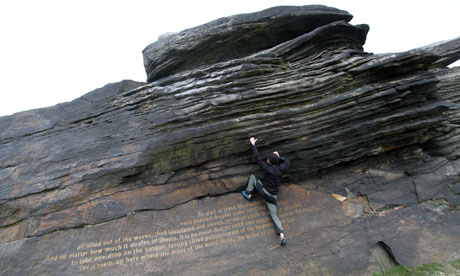




 As you can see from the heading, I’ll be blogging under a new name from now on to celebrate our move from King’s Lynn to East Runton, a little village just outside Cromer near to where the late, great John Hurt lived. I’ve already started writing more sea related poetry than usual so it looks as if it could be an inspirational step in the right direction and there are lots of great cafes to explore locally!
As you can see from the heading, I’ll be blogging under a new name from now on to celebrate our move from King’s Lynn to East Runton, a little village just outside Cromer near to where the late, great John Hurt lived. I’ve already started writing more sea related poetry than usual so it looks as if it could be an inspirational step in the right direction and there are lots of great cafes to explore locally!
 I’m rather partial to modern cinematic adaptations of Jane Austen and Alicia Silverstone as a high-school Valley Girl version of Emma is one of my favourites, followed closely by Gurinder Chadha’s brilliantly cheesy Bollywood Bride and Prejudice. I often find myself, just as Emily Blunt’s character does in The Jane Austen Book Club, asking What Would Jane do?
I’m rather partial to modern cinematic adaptations of Jane Austen and Alicia Silverstone as a high-school Valley Girl version of Emma is one of my favourites, followed closely by Gurinder Chadha’s brilliantly cheesy Bollywood Bride and Prejudice. I often find myself, just as Emily Blunt’s character does in The Jane Austen Book Club, asking What Would Jane do?
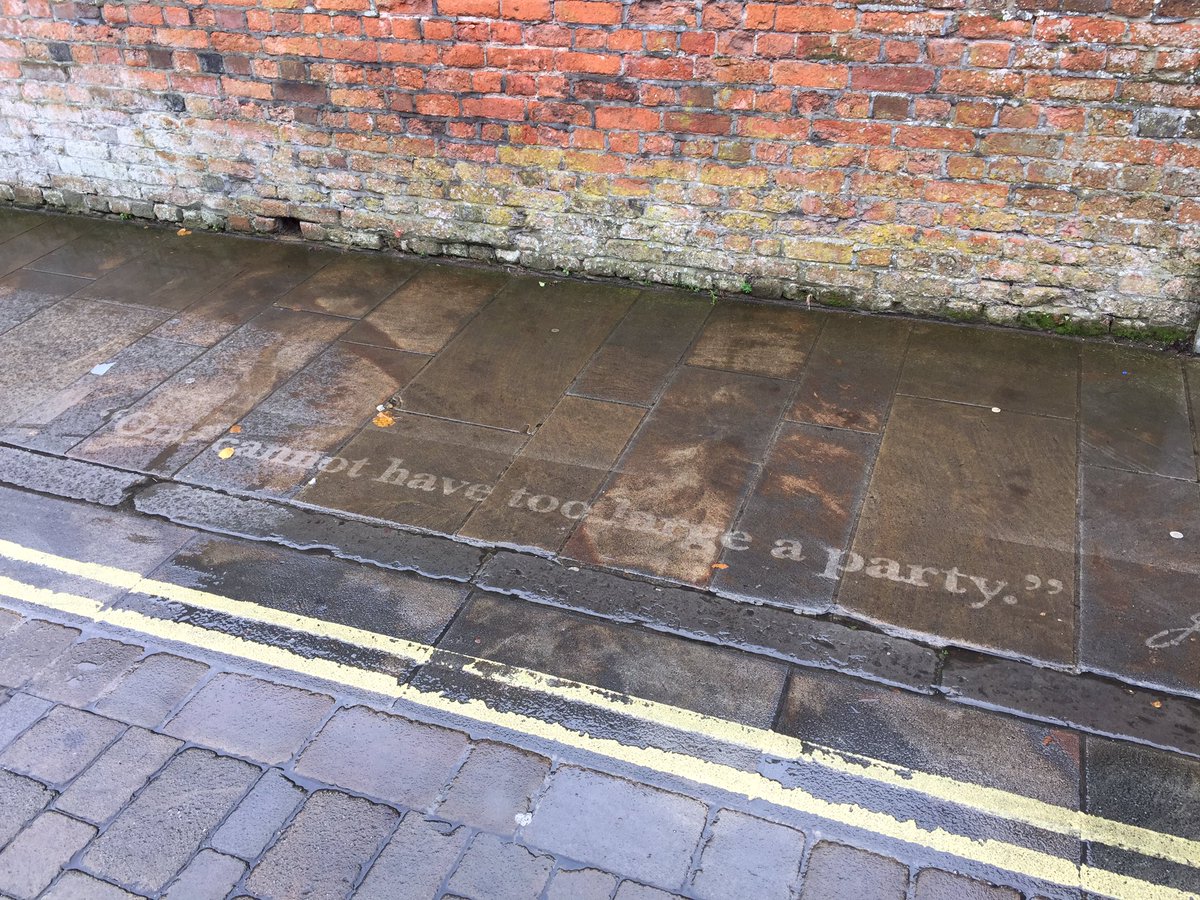 In May this year I visited Winchester, paid my respects at Jane’s gravestone in the cathedral and absorbed the atmosphere of this pretty town where she lived out her last few months. “I see more distinctly through the rain,” Jane once wrote and, with this in mind, there’s a wonderful trail through the town called Rain Jane. If it rains, quotes from her novels magically appear on the pavements and disappear as the rain evaporates.
In May this year I visited Winchester, paid my respects at Jane’s gravestone in the cathedral and absorbed the atmosphere of this pretty town where she lived out her last few months. “I see more distinctly through the rain,” Jane once wrote and, with this in mind, there’s a wonderful trail through the town called Rain Jane. If it rains, quotes from her novels magically appear on the pavements and disappear as the rain evaporates.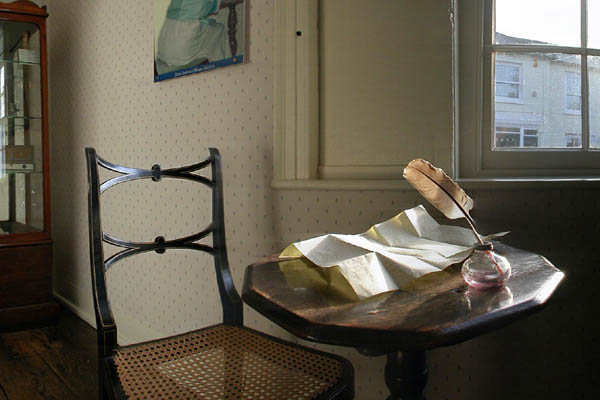 I also visited the village of Chawton, where, in the cottage which is now the Jane Austen’s House Museum. Here, Jane, her mother and beloved sister Cassandra finally had a place they could call their own, albeit briefly. I stood reverently before the table where she wrote, trying not to be too angry at the tiny space she had to let her imagination run riot with the intricacies of hatching, matching and dispatching. This anger led to my only Austen inspired poem, the imaginatively titled Jane’s Table!
I also visited the village of Chawton, where, in the cottage which is now the Jane Austen’s House Museum. Here, Jane, her mother and beloved sister Cassandra finally had a place they could call their own, albeit briefly. I stood reverently before the table where she wrote, trying not to be too angry at the tiny space she had to let her imagination run riot with the intricacies of hatching, matching and dispatching. This anger led to my only Austen inspired poem, the imaginatively titled Jane’s Table!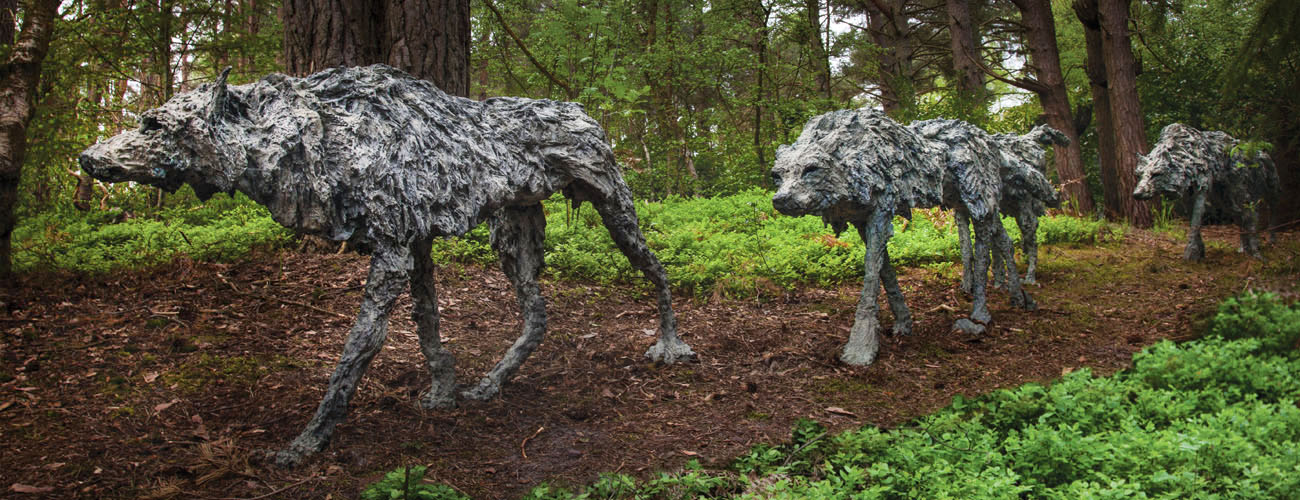 If you do find yourself in this part of Hampshire, then the Sculpture Park in Churt is well worth a visit. It’s really a giant open air exhibition showcasing around 800 pieces of work from approximately 300 different artists. This means it’s also well worth revisiting as the pieces are all for sale and change constantly. It’s set in ten acres of woodland and heathland with some quite steep parts at times as it’s set in a natural valley. There are three lakes fed by natural springs which provide a stunning backdrop for some of the artwork.
If you do find yourself in this part of Hampshire, then the Sculpture Park in Churt is well worth a visit. It’s really a giant open air exhibition showcasing around 800 pieces of work from approximately 300 different artists. This means it’s also well worth revisiting as the pieces are all for sale and change constantly. It’s set in ten acres of woodland and heathland with some quite steep parts at times as it’s set in a natural valley. There are three lakes fed by natural springs which provide a stunning backdrop for some of the artwork.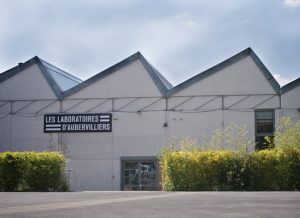 All photos courtesy of The Ark: Center for Experimentation Grace Ndiritu Laboratories d’Aubervilliers, Paris
All photos courtesy of The Ark: Center for Experimentation Grace Ndiritu Laboratories d’Aubervilliers, Paris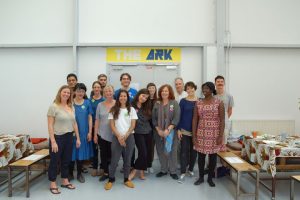
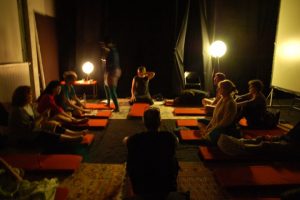
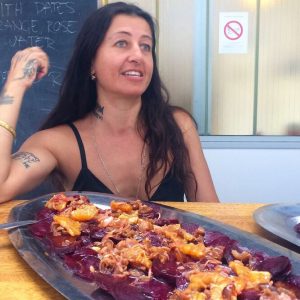

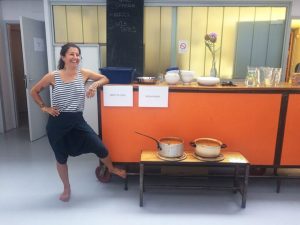
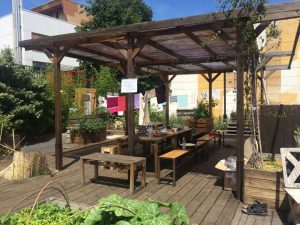 Particularly striking were the giant cardooms and the whole space was enhanced by the presence of Josette and Margeurite, the resident hens. The yard gates were the limit of our world and as we socialised in the garden in the evenings we could hear dance music from the theatre next door. There was also quite a famous boxing club there and we watched the comings and goings from afar.
Particularly striking were the giant cardooms and the whole space was enhanced by the presence of Josette and Margeurite, the resident hens. The yard gates were the limit of our world and as we socialised in the garden in the evenings we could hear dance music from the theatre next door. There was also quite a famous boxing club there and we watched the comings and goings from afar.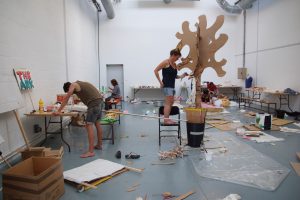 In the afternoons we made masks and costumes, led by talented artists Urara Tsuchiya and Anna Tanner. This was for the grand finale of The Ark project– a street carnival parade of extinct animals, reverse Darwinism in action. I was on megaphone duty shouting slogans in French and English through the bemused but entertained streets of Aubervilliers, resplendent in tie-dye and blue face paint!
In the afternoons we made masks and costumes, led by talented artists Urara Tsuchiya and Anna Tanner. This was for the grand finale of The Ark project– a street carnival parade of extinct animals, reverse Darwinism in action. I was on megaphone duty shouting slogans in French and English through the bemused but entertained streets of Aubervilliers, resplendent in tie-dye and blue face paint!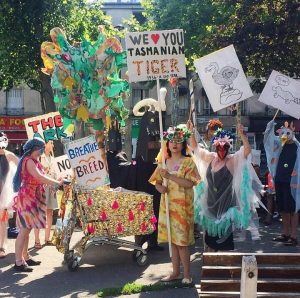
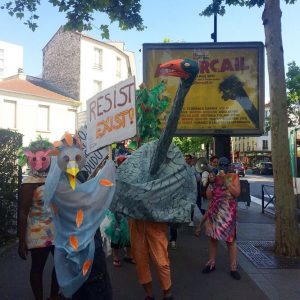
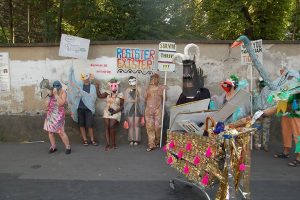
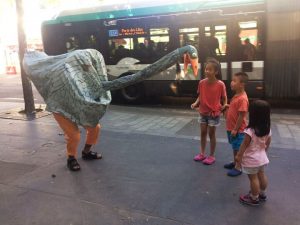

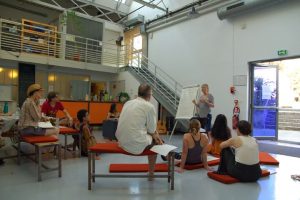
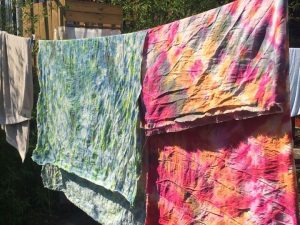 I loved the way our community developed – after no contact with the outside world it was both a wonder and a shock to communicate with the staff at the Labos after days of smiling but not talking and then to venture further afield to interact with the local community. By the end of the day we were also dancing like mad to a great selection of music, with Max and Julian DJ-ing as the street parade was followed by a public barbecue. The following day the Labos opened to the public for academic round-table discussions. The timing was perfect, who knows what would have happened if we’d been Arkees for longer, as over the week we had gone feral – enjoying the outdoor shower (it was a really hot week), spraying each other with water to cool down, gradually losing our flip-flops to go barefoot, eating with our hands Southern Indian style, wearing more and more makeshift outfits to cope with the heat (I ended up wearing the bit of cloth I’d taken as a pillowslip as a sarong for most of the week!).
I loved the way our community developed – after no contact with the outside world it was both a wonder and a shock to communicate with the staff at the Labos after days of smiling but not talking and then to venture further afield to interact with the local community. By the end of the day we were also dancing like mad to a great selection of music, with Max and Julian DJ-ing as the street parade was followed by a public barbecue. The following day the Labos opened to the public for academic round-table discussions. The timing was perfect, who knows what would have happened if we’d been Arkees for longer, as over the week we had gone feral – enjoying the outdoor shower (it was a really hot week), spraying each other with water to cool down, gradually losing our flip-flops to go barefoot, eating with our hands Southern Indian style, wearing more and more makeshift outfits to cope with the heat (I ended up wearing the bit of cloth I’d taken as a pillowslip as a sarong for most of the week!).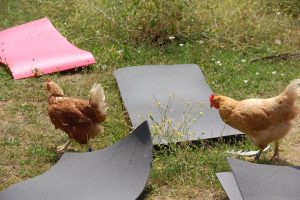
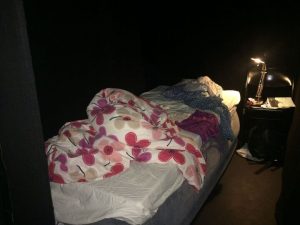

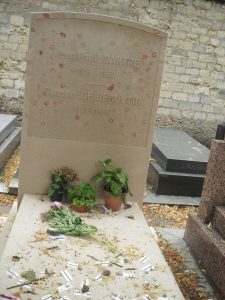
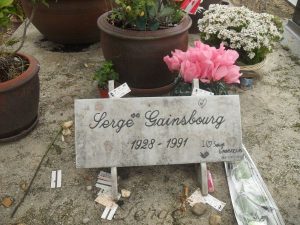 Coincidentally (or not!), Gainsbourg is also buried at Montparnasse Cemetery along with other greats such as the poet Baudelaire, who is influential in my constant attempts to write flaneur poems; Jean Seberg, star of one of my favourite new-wave films, Breathless; Henri Langlois who ensured that French film was preserved and celebrated in a way that befitted its importance by heading up the Cinemathèque Française and who was the revered and beloved mentor of FrançoisTruffaut and Jean-Luc Godard; and not forgetting Jacques Demy, film-making husband of one of my favourite directors, Agnes Varda.
Coincidentally (or not!), Gainsbourg is also buried at Montparnasse Cemetery along with other greats such as the poet Baudelaire, who is influential in my constant attempts to write flaneur poems; Jean Seberg, star of one of my favourite new-wave films, Breathless; Henri Langlois who ensured that French film was preserved and celebrated in a way that befitted its importance by heading up the Cinemathèque Française and who was the revered and beloved mentor of FrançoisTruffaut and Jean-Luc Godard; and not forgetting Jacques Demy, film-making husband of one of my favourite directors, Agnes Varda.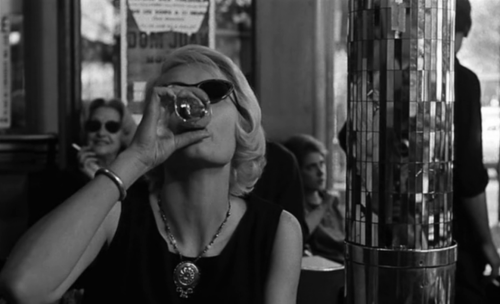

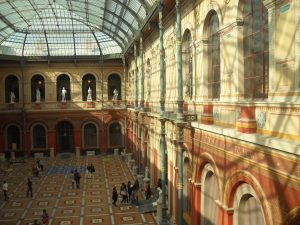
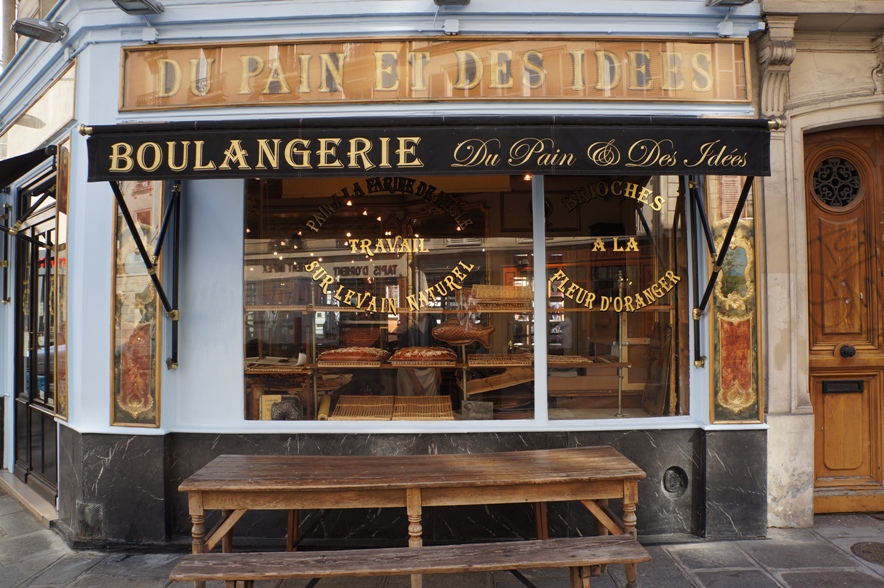
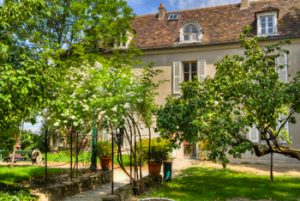 lived. The Renoir garden is a beautiful place for a coffee or lunch. The buildings are among the oldest in Montmartre and with their shutters and natural gardens and view over the vineyards of Montmartre it feels as if you are back in the original village. My goal for this visit was the Demarne Hotel – the building which houses the Museum’s temporary exhibitions. Many impressionist painters lived and worked here as did Père Tanguy, the famous art dealer. It was also home to Claude de la Rose, one of Molière’s troupe of actors but today it was housing the fantastic exhibition “Montmartre – Décor de Cinema” a celebration of the area as a cinematic location. There’s so much to enjoy, it’s an excellently curated exhibition with a wealth of film clips. There’s a whole space dedicated to Amélie, a look at Truffaut’s use of Montmartre Cemetery and Place de Clichy, but the two films which are now at the top of my wish-list were directed by Marcel Carné, La Porte de la Nuit featuring an incredibly detailed studio reproduction of the metro station at Barbès Rochechouart, which used to be my local, and Juliette ou La Clef des Songes which lured me in immediately with its air of doomed love.
lived. The Renoir garden is a beautiful place for a coffee or lunch. The buildings are among the oldest in Montmartre and with their shutters and natural gardens and view over the vineyards of Montmartre it feels as if you are back in the original village. My goal for this visit was the Demarne Hotel – the building which houses the Museum’s temporary exhibitions. Many impressionist painters lived and worked here as did Père Tanguy, the famous art dealer. It was also home to Claude de la Rose, one of Molière’s troupe of actors but today it was housing the fantastic exhibition “Montmartre – Décor de Cinema” a celebration of the area as a cinematic location. There’s so much to enjoy, it’s an excellently curated exhibition with a wealth of film clips. There’s a whole space dedicated to Amélie, a look at Truffaut’s use of Montmartre Cemetery and Place de Clichy, but the two films which are now at the top of my wish-list were directed by Marcel Carné, La Porte de la Nuit featuring an incredibly detailed studio reproduction of the metro station at Barbès Rochechouart, which used to be my local, and Juliette ou La Clef des Songes which lured me in immediately with its air of doomed love.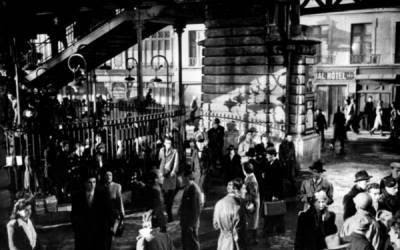
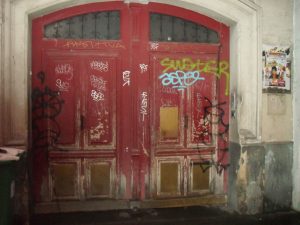 What particularly made me think of this was where I was staying in Paris this time – for I was truly a poet in a garrett. A teeny tiny apartment in a chambre de bonne, a maid’s room, on the sixth floor of one of those crumbling grey Parisian apartment blocks gathered around a courtyard. I felt as if I were in a Marcel Carné film with Jean Gabin just about to burst in at his angst-ridden best…
What particularly made me think of this was where I was staying in Paris this time – for I was truly a poet in a garrett. A teeny tiny apartment in a chambre de bonne, a maid’s room, on the sixth floor of one of those crumbling grey Parisian apartment blocks gathered around a courtyard. I felt as if I were in a Marcel Carné film with Jean Gabin just about to burst in at his angst-ridden best…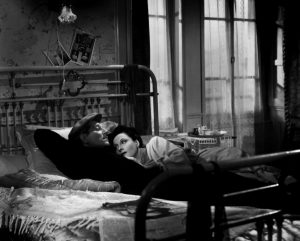
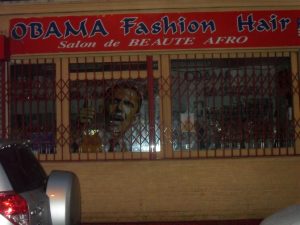
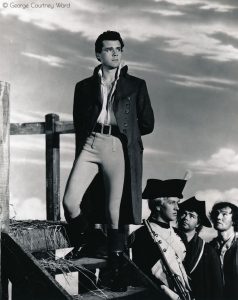 One of the themes I was exploring this time was revolution and as well as a guided walk around the Odéon area with the wonderful Paris Walks
One of the themes I was exploring this time was revolution and as well as a guided walk around the Odéon area with the wonderful Paris Walks 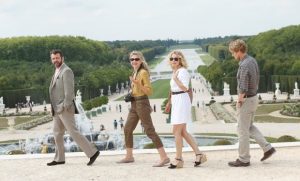 To continue this revolutionary theme, I went to Versailles for the day and found that I couldn’t remember it at all although I’m sure I’ve been there quite a few times. I love the scene in Woody Allen’s Midnight in Paris is when frustrated Hollywood hack Gil Pender, played by Owen Wilson, has to endure a day with Michael Sheen as an irritating know-it-all lecturer when all he wants to do is follow his flâneur instincts and just be there. Gil time travels back to the twenties and the Belle Époque and Allen’s film was possibly inspired by a famous incident in 1901 when two academics, Charlotte Moberley and Eleanor Jourdain, claimed to have timeslipped back to pre-Revolutionary Versailles. My strangest encounter was with a muskrat … I did a very extensive walk in the grounds to think and write and there he was, grazing on a little island in the hameau de la reine where Marie-Antoinette lived out her peasant fantasies. I have no idea what he was doing there, presumably an escapee, but I felt I’d arrived in a parallel universe, one populated by giant rats!
To continue this revolutionary theme, I went to Versailles for the day and found that I couldn’t remember it at all although I’m sure I’ve been there quite a few times. I love the scene in Woody Allen’s Midnight in Paris is when frustrated Hollywood hack Gil Pender, played by Owen Wilson, has to endure a day with Michael Sheen as an irritating know-it-all lecturer when all he wants to do is follow his flâneur instincts and just be there. Gil time travels back to the twenties and the Belle Époque and Allen’s film was possibly inspired by a famous incident in 1901 when two academics, Charlotte Moberley and Eleanor Jourdain, claimed to have timeslipped back to pre-Revolutionary Versailles. My strangest encounter was with a muskrat … I did a very extensive walk in the grounds to think and write and there he was, grazing on a little island in the hameau de la reine where Marie-Antoinette lived out her peasant fantasies. I have no idea what he was doing there, presumably an escapee, but I felt I’d arrived in a parallel universe, one populated by giant rats!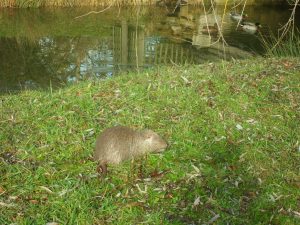

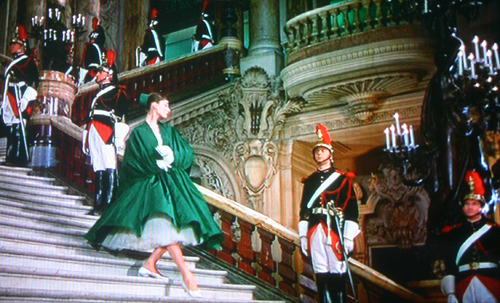
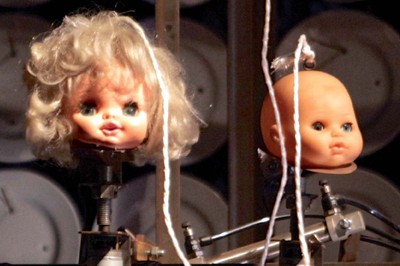

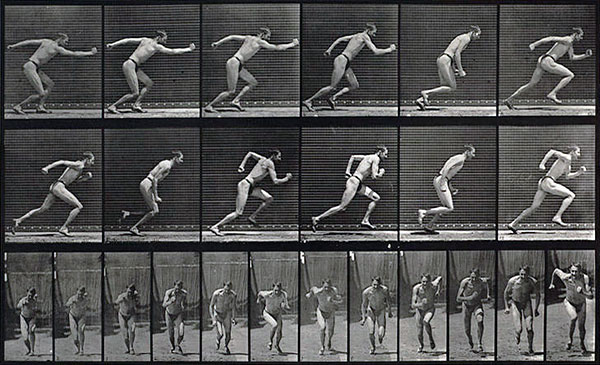

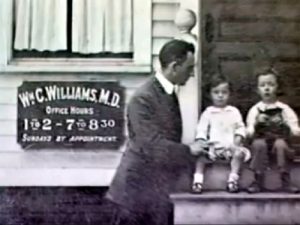
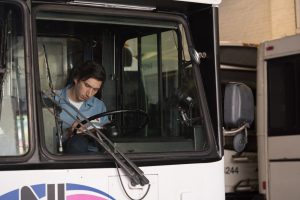
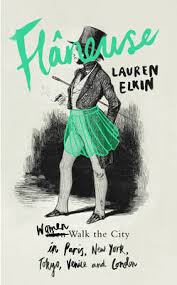 which looks at urban walking from a female/feminist point of view. Perhaps this is why I wrote so much during my five weeks in Paris. I rarely stopped walking, becoming quite Dickensian in my need to tramp the streets and observe. These resulted in five Flâneur poems but also meant that I had a great deal of raw material which I’m still only part-way through processing. Recently I’ve also returned to a favourite text, “Walking” by Henry David Thoreau, an activity he describes as one which “awakens the senses and the soul” although, of course, Thoreau walks alone in nature not shoulder to shoulder with his fellow humans in the noise and grime of the city.
which looks at urban walking from a female/feminist point of view. Perhaps this is why I wrote so much during my five weeks in Paris. I rarely stopped walking, becoming quite Dickensian in my need to tramp the streets and observe. These resulted in five Flâneur poems but also meant that I had a great deal of raw material which I’m still only part-way through processing. Recently I’ve also returned to a favourite text, “Walking” by Henry David Thoreau, an activity he describes as one which “awakens the senses and the soul” although, of course, Thoreau walks alone in nature not shoulder to shoulder with his fellow humans in the noise and grime of the city.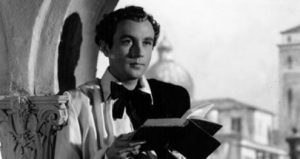 Lately, I’ve been looking at films about poets in order to explore their lives and inspiration cinematically – biographies on the page can often be too dry and academic for my taste. There’s Bright Star which looks at Keats’ life, and Howl which focuses on the Ginsberg obscenity trial in San Francisco and is a wonderful mix of anger, animation and groundbreaking literary history. One I’ve always wanted to see is The Bad Lord Byron starring Dennis Price, (who, in Kind Hearts and Coronets played Louis Mazzini, the disowned heir who systematically and brilliantly kills all his relatives – so I’m sure this will be a winner when I eventually source it!). I’m also looking forward to seeing A Quiet Passion, the biopic of Emily Dickinson starring the fantastic Cynthia Nixon (Miranda in Sex and the City). This set me thinking about who I would want to play me in the film of my life, should anyone be foolish enough to take this commercial risk! My top choice would be Kirsten Dunst – she’s feisty, clever, quirky and a fantastic actress but, should she be unavailable, then I would love to have the amazing Nicola Walker – I am so looking forward to the new series of Unforgotten in 2017. Walker is an actress of great intelligence and integrity and would do any poet proud! So, who would you pick to play you?!
Lately, I’ve been looking at films about poets in order to explore their lives and inspiration cinematically – biographies on the page can often be too dry and academic for my taste. There’s Bright Star which looks at Keats’ life, and Howl which focuses on the Ginsberg obscenity trial in San Francisco and is a wonderful mix of anger, animation and groundbreaking literary history. One I’ve always wanted to see is The Bad Lord Byron starring Dennis Price, (who, in Kind Hearts and Coronets played Louis Mazzini, the disowned heir who systematically and brilliantly kills all his relatives – so I’m sure this will be a winner when I eventually source it!). I’m also looking forward to seeing A Quiet Passion, the biopic of Emily Dickinson starring the fantastic Cynthia Nixon (Miranda in Sex and the City). This set me thinking about who I would want to play me in the film of my life, should anyone be foolish enough to take this commercial risk! My top choice would be Kirsten Dunst – she’s feisty, clever, quirky and a fantastic actress but, should she be unavailable, then I would love to have the amazing Nicola Walker – I am so looking forward to the new series of Unforgotten in 2017. Walker is an actress of great intelligence and integrity and would do any poet proud! So, who would you pick to play you?!
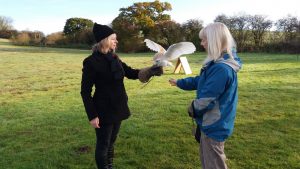
 So, my burning question to you this month is where is the most unusual place you’ve eaten or drunk? I thought my answer to this might be drinking Vietnamese coffee at a tiny stall by the shores of the very urban Hoan Kiem Lake in the middle of Hanoi, watching elderly ladies doing t’ai chi; or maybe having Tibetan momo dumplings at the Trades Club in Hebden Bridge where the excellent Lhamo’s Kitchen provides tasty lunches; or maybe tea and cake on a barge on Regent’s Canal. Or more exotic still, having Christmas dinner in the desert in Rajastan with the camel I’d been riding snorting in a hideous manner nearby. I didn’t realise how close we were to the Pakistan border until our guide insisted on giving the lion’s share of our quite meagre meal to two men who turned up out of the blue. They turned out to be heroin smugglers so it was quite a relief that we’d all been terribly British and scrupulously polite… I have fond memories of being in Kerala and eating at railway stations where the dhal and rice were served from buckets in a massive canteen with no cutlery in sight. I just couldn’t get the knack of rolling my rice and lentils into a shapely ball… Then there was the unexpected St Anne’s Well Cafe on the slopes of the Malvern Hills which did vegetarian food and even vegan cakes. Breakfast at the Troubadour is also one of my favourites, it hasn’t changed since the 1960s and I always expect Bob Dylan to stroll in looking a bit hungover…
So, my burning question to you this month is where is the most unusual place you’ve eaten or drunk? I thought my answer to this might be drinking Vietnamese coffee at a tiny stall by the shores of the very urban Hoan Kiem Lake in the middle of Hanoi, watching elderly ladies doing t’ai chi; or maybe having Tibetan momo dumplings at the Trades Club in Hebden Bridge where the excellent Lhamo’s Kitchen provides tasty lunches; or maybe tea and cake on a barge on Regent’s Canal. Or more exotic still, having Christmas dinner in the desert in Rajastan with the camel I’d been riding snorting in a hideous manner nearby. I didn’t realise how close we were to the Pakistan border until our guide insisted on giving the lion’s share of our quite meagre meal to two men who turned up out of the blue. They turned out to be heroin smugglers so it was quite a relief that we’d all been terribly British and scrupulously polite… I have fond memories of being in Kerala and eating at railway stations where the dhal and rice were served from buckets in a massive canteen with no cutlery in sight. I just couldn’t get the knack of rolling my rice and lentils into a shapely ball… Then there was the unexpected St Anne’s Well Cafe on the slopes of the Malvern Hills which did vegetarian food and even vegan cakes. Breakfast at the Troubadour is also one of my favourites, it hasn’t changed since the 1960s and I always expect Bob Dylan to stroll in looking a bit hungover… Then there was the picnic we had by Golden Gate Bridge (I insisted on stopping at more or less the exact spot where Kim Novak as Madeleine Elster plunges into the Bay in Hitchcock’s Vertigo… )– tomatoes, hummus, tortilla chips, bright blue sky, ochre bridge and a sudden pod of dolphins arcing by…
Then there was the picnic we had by Golden Gate Bridge (I insisted on stopping at more or less the exact spot where Kim Novak as Madeleine Elster plunges into the Bay in Hitchcock’s Vertigo… )– tomatoes, hummus, tortilla chips, bright blue sky, ochre bridge and a sudden pod of dolphins arcing by…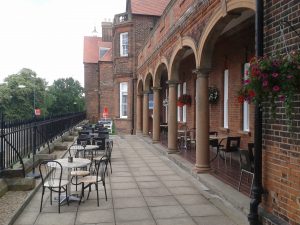 By far the most unusual culinary experience, however, was on a recent trip to Norwich when Chris and I visited H M Prison in Britannia Road for no other reason than to have a mug of tea… The prison is located in one of those gorgeous red-brick Victorian facades which seem to belie what goes on inside (workhouses etc…) and has the most amazing but deeply ironic views over Mousehold Heath and across the City. And now you can enjoy the view without having to bring your own flask and sandwiches as since 2014 the Café Britannia has been operating right at the front of the prison complex in the old barracks: shabby chic interiors, a terrace with great views, gorgeous cakes, great lunches, elegant afternoon teas, British bistro meals in the evening and bargain-priced Christmas dinners. The staff are described as “low-risk inmates” who want to learn new skills and improve their lives. I have to say that we received some of the best customer service we’ve ever had and there was even a slightly surreal moment when the cashier gave me one of the new five-pound notes in my change and commented that they looked fake…
By far the most unusual culinary experience, however, was on a recent trip to Norwich when Chris and I visited H M Prison in Britannia Road for no other reason than to have a mug of tea… The prison is located in one of those gorgeous red-brick Victorian facades which seem to belie what goes on inside (workhouses etc…) and has the most amazing but deeply ironic views over Mousehold Heath and across the City. And now you can enjoy the view without having to bring your own flask and sandwiches as since 2014 the Café Britannia has been operating right at the front of the prison complex in the old barracks: shabby chic interiors, a terrace with great views, gorgeous cakes, great lunches, elegant afternoon teas, British bistro meals in the evening and bargain-priced Christmas dinners. The staff are described as “low-risk inmates” who want to learn new skills and improve their lives. I have to say that we received some of the best customer service we’ve ever had and there was even a slightly surreal moment when the cashier gave me one of the new five-pound notes in my change and commented that they looked fake… 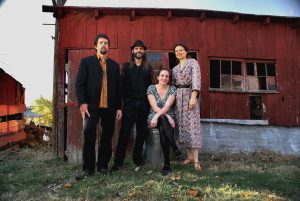
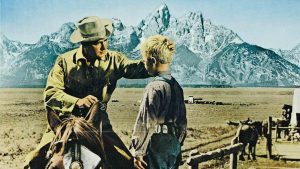 The second part of our US trip took us to the Wild West for a week exploring Yellowstone and Grand Teton National Parks in Wyoming and Montana. I grew up on a diet of cowboy films, John Wayne in The Searchers, Alan Ladd in Shane, Gregory Peck in The Big Country and many, many more. Seeing scenes from these films come to life – the razor sharp crags of the Tetons, the old, wise rocks of Yellowstone, herds of bison on the plains, a coyote leaping on a small critter and then chewing it at some length… was an extraordinary experience.
The second part of our US trip took us to the Wild West for a week exploring Yellowstone and Grand Teton National Parks in Wyoming and Montana. I grew up on a diet of cowboy films, John Wayne in The Searchers, Alan Ladd in Shane, Gregory Peck in The Big Country and many, many more. Seeing scenes from these films come to life – the razor sharp crags of the Tetons, the old, wise rocks of Yellowstone, herds of bison on the plains, a coyote leaping on a small critter and then chewing it at some length… was an extraordinary experience.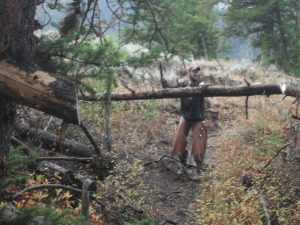 We rode out on a trail with Hunter who, reassuringly, packed a pistol as we had learnt the scary way that you are never far from a bear on the trails (eight sightings in eight days!). Bat-eared moose deer watched us from between the trees and at one point Hunter sprang from the saddle, hoiked a handy saw from his saddlebag and cut down a tree blocking the path. He was up in Wyoming for the season, away from his usual work as a cattle drover in South Carolina. I tell you, I sure could get used to being called “Ma’am” in a Deep Southern drawl…
We rode out on a trail with Hunter who, reassuringly, packed a pistol as we had learnt the scary way that you are never far from a bear on the trails (eight sightings in eight days!). Bat-eared moose deer watched us from between the trees and at one point Hunter sprang from the saddle, hoiked a handy saw from his saddlebag and cut down a tree blocking the path. He was up in Wyoming for the season, away from his usual work as a cattle drover in South Carolina. I tell you, I sure could get used to being called “Ma’am” in a Deep Southern drawl…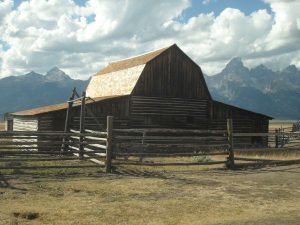 There were so many poetic moments, my notebook was full of frantic scribblings, but what I was seeing was almost as difficult to capture in words as it was to do justice to in photographs. How to describe the particular yellow of aspen leaves just beginning to turn in the Autumn sunshine? How to describe the deserted Mormon houses and barns in soft green meadows with the towering, snow-capped Tetons as a backdrop? What could capture the smell of sagebrush leaves rubbed between finger and thumb – a cross between cotton lavender and curry plant…
There were so many poetic moments, my notebook was full of frantic scribblings, but what I was seeing was almost as difficult to capture in words as it was to do justice to in photographs. How to describe the particular yellow of aspen leaves just beginning to turn in the Autumn sunshine? How to describe the deserted Mormon houses and barns in soft green meadows with the towering, snow-capped Tetons as a backdrop? What could capture the smell of sagebrush leaves rubbed between finger and thumb – a cross between cotton lavender and curry plant…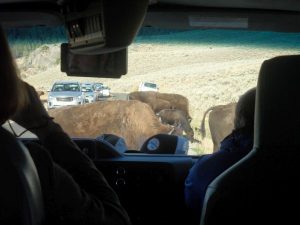 One of the best things about driving through the parks was the feeling that the animals were in charge as we got stuck in endless bison jams, elk jams, mountain sheep jams – seemingly no-one had told the animals that their traditional rights of way were now tarmac.
One of the best things about driving through the parks was the feeling that the animals were in charge as we got stuck in endless bison jams, elk jams, mountain sheep jams – seemingly no-one had told the animals that their traditional rights of way were now tarmac.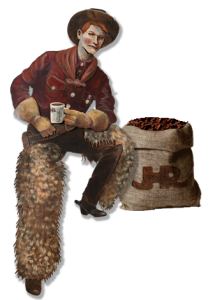 We were based for some of the time in Jackson Hole where we discovered the fantastic Wort Hotel as well as The Jackson Hole Coffee Roastery which had varnished coffee sacks to create a highly original floor surface. Coffee was mostly Twin Peaks style cups of joe – hot, vaguely satisfying and plentiful but we had to wait until Denver for a proper fix…
We were based for some of the time in Jackson Hole where we discovered the fantastic Wort Hotel as well as The Jackson Hole Coffee Roastery which had varnished coffee sacks to create a highly original floor surface. Coffee was mostly Twin Peaks style cups of joe – hot, vaguely satisfying and plentiful but we had to wait until Denver for a proper fix…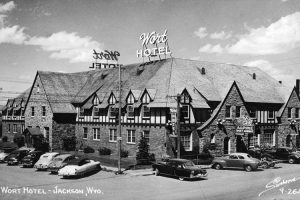 The Wort Hotel was built by homesteader Charles Wort in 1941 and its most famous feature is the Silver Dollar Bar. Charles bought 2032 uncirculated Morgan silver dollars from the Denver mint and most of them are embedded in the bar, although they do turn up in other places in the hotel too. With its boardwalks and wooden architecture Jackson Hole was a popular location for the movies and many of the stars were attracted to the delights on offer in the Wort Hotel, not least some underground gambling.
The Wort Hotel was built by homesteader Charles Wort in 1941 and its most famous feature is the Silver Dollar Bar. Charles bought 2032 uncirculated Morgan silver dollars from the Denver mint and most of them are embedded in the bar, although they do turn up in other places in the hotel too. With its boardwalks and wooden architecture Jackson Hole was a popular location for the movies and many of the stars were attracted to the delights on offer in the Wort Hotel, not least some underground gambling. 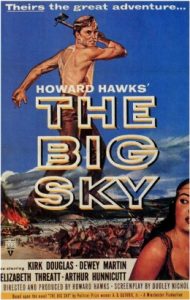
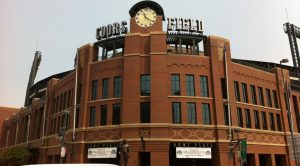 We spent our first night at Coors Field watching the St Louis Cardinals slaughter the Rockies against a picture postcard view of the mountains the team are named after. In between innings I stocked up on veggie dogs, fries and homemade lemonade. Even the Beats loved baseball, it’s the quintessential American game – check out Lawrence Ferlinghetti’s “Baseball Canto”:
We spent our first night at Coors Field watching the St Louis Cardinals slaughter the Rockies against a picture postcard view of the mountains the team are named after. In between innings I stocked up on veggie dogs, fries and homemade lemonade. Even the Beats loved baseball, it’s the quintessential American game – check out Lawrence Ferlinghetti’s “Baseball Canto”: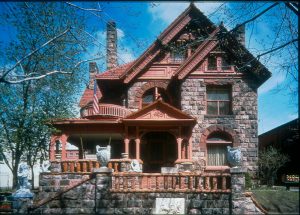 We discovered the story of pioneering, proto-feminist Molly Brown when we visited her fantastic 19th century Queen Anne style house with, it has to be said, a slight touch of the Bates Motel…. This incredible woman was known as the “Unsinkable” – not only did she survive the Titanic voyage but she also insisted on turning round the life raft she was in to take on board more survivors. Debbie Reynolds brings her to somewhat alarming life in the very cheesy Hollywood musical The Unsinkable Molly Brown with Harve Presnell as hubby J J Brown trilling his heart out in totally inappropriate operatic style.
We discovered the story of pioneering, proto-feminist Molly Brown when we visited her fantastic 19th century Queen Anne style house with, it has to be said, a slight touch of the Bates Motel…. This incredible woman was known as the “Unsinkable” – not only did she survive the Titanic voyage but she also insisted on turning round the life raft she was in to take on board more survivors. Debbie Reynolds brings her to somewhat alarming life in the very cheesy Hollywood musical The Unsinkable Molly Brown with Harve Presnell as hubby J J Brown trilling his heart out in totally inappropriate operatic style.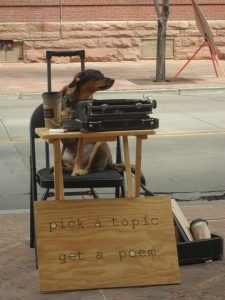 The Tattered Cover Bookstore became one of our favourite Denver haunts – an enormous, laid back place with a coffee bar, free literary talks and a fantastic range of poetry books and writing magazines. I discovered David Mason, Colorado Poet Laureate, and bought his wonderful collection “Sea Salt”. Mason’s language is simple and elegant, with a strong sense of place:
The Tattered Cover Bookstore became one of our favourite Denver haunts – an enormous, laid back place with a coffee bar, free literary talks and a fantastic range of poetry books and writing magazines. I discovered David Mason, Colorado Poet Laureate, and bought his wonderful collection “Sea Salt”. Mason’s language is simple and elegant, with a strong sense of place: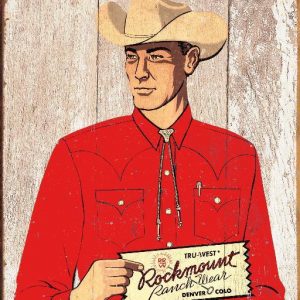 Surely the best shop of all has to be Rockmount Ranchwear (
Surely the best shop of all has to be Rockmount Ranchwear (